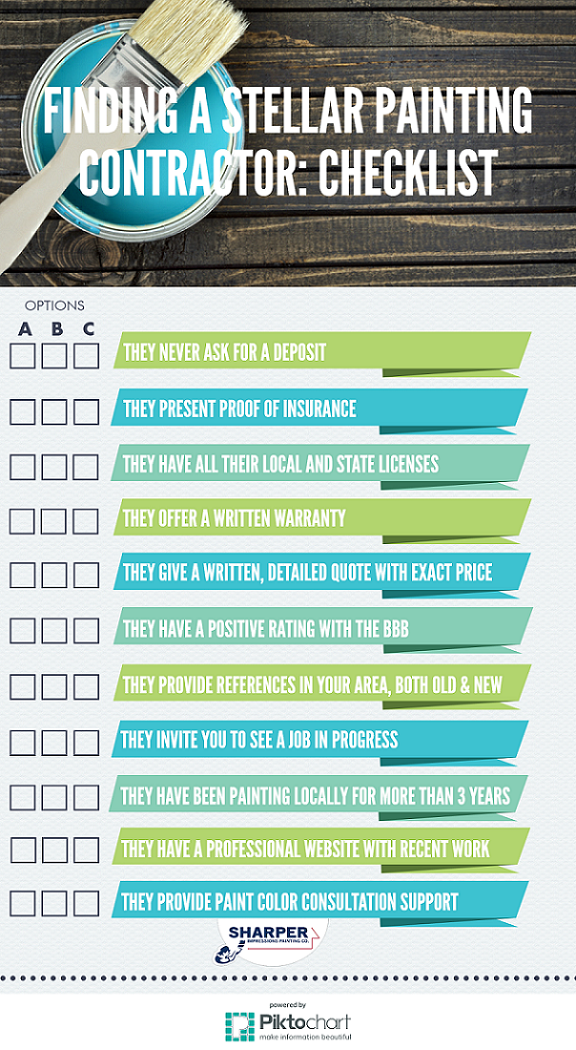The Psychological Effects Of Paint Color Styles: Just How Your Mood Can Be Impacted By Shade Psychology
The Psychological Effects Of Paint Color Styles: Just How Your Mood Can Be Impacted By Shade Psychology
Blog Article
Content By-Kincaid Mayo
When it involves selecting paint colors for a space, the selections made extend past mere visual appeals. The psychology of shade delves into exactly how various colors can influence our feelings and mental well-being, forming the setting of a room in profound methods. Recognizing the effect of color on state of mind can bring about intentional and critical design decisions that cater to improving numerous facets of our lives. By checking out hospital painting contractors detailed partnership between color and psychology, one can reveal the subtle yet effective methods which paint selections impact our emotional experiences within a provided setting.
The Influence of Shade on Emotions
Regularly, the colors we border ourselves with can substantially influence our emotion and overall health. The influence of color on feelings is a well-researched field within psychology and interior decoration.
Cozy colors like red, orange, and yellow are understood to evoke sensations of power, heat, and convenience. These shades can stimulate discussion and produce a relaxing ambiance in an area.
On the other hand, amazing colors such as blue, green, and purple often tend to have a relaxing impact, promoting leisure and harmony. These shades are typically favored in bed rooms and offices to produce a feeling of serenity.
Furthermore, the intensity and saturation of colors play a critical role in determining their emotional effect. Intense, vivid colors can generate feelings of enjoyment and enthusiasm, while soft tones are more soothing and mild.
It is essential to take into consideration the wanted emotional response when selecting paint shades for various spaces in your home or work area. By recognizing the psychology of color, you can create atmospheres that support your psychological wellness and boost your total state of mind.
Selecting the Right Paint Color Styles
Recognizing the psychology of shade and its influence on feelings can guide people in choosing the right paint shades for their living spaces. When picking paint shades, it's essential to take into consideration the state of mind you intend to create in each space.
As an example, soothing shades like blue and green are excellent for rooms and relaxation locations, as they advertise a sense of peace. On the other hand, vivid shades like yellow or red can stimulate and promote conversation in social spaces such as living rooms or dining areas.
Along with the emotional effect, the size and lighting of a room need to additionally affect color choices. Lighter hues can make a tiny area feel even more roomy, while darker tones can include heat and coziness to bigger locations. factory painting specialist enhances the method shades appear, so it's vital to examine paint examples in various lights conditions before making a final decision.
Eventually, selecting the right paint shades involves a thoughtful factor to consider of both psychological responses and sensible aspects to produce an unified and comfortable living atmosphere.
Developing the Desired Ambience
Achieving the preferred atmosphere in a room involves a calculated combination of color choices and lighting considerations. Shade plays a vital duty in establishing the state of mind of a space. Cozy tones like reds, oranges, and yellows can produce a relaxing and welcoming atmosphere, excellent for areas where comfort is key, such as living areas or bedrooms.
On the other hand, trendy shades like blues and environment-friendlies stimulate a feeling of calmness and leisure, making them ideal for locations where peace is desired, like restrooms or reflection rooms.
In addition to color, lighting is another essential factor in forming the atmosphere of an area. Soft, warm lights can enhance the warmth of a room, while intense, great illumination can energize and boost the state of mind. Dimmer buttons or adjustable illumination fixtures provide versatility, enabling you to adapt the lights to fit different tasks or moods throughout the day.
Conclusion
Finally, the psychology of shade shows the substantial influence paint choices can have on our state of mind and emotions within an area.
By understanding exactly how various shades evoke details feelings and selecting paint colors appropriately, we can produce environments that promote power, convenience, leisure, or excitement.
Carefully selecting the best shades can help us to affect our emotional state and overall wellness in an offered space.
